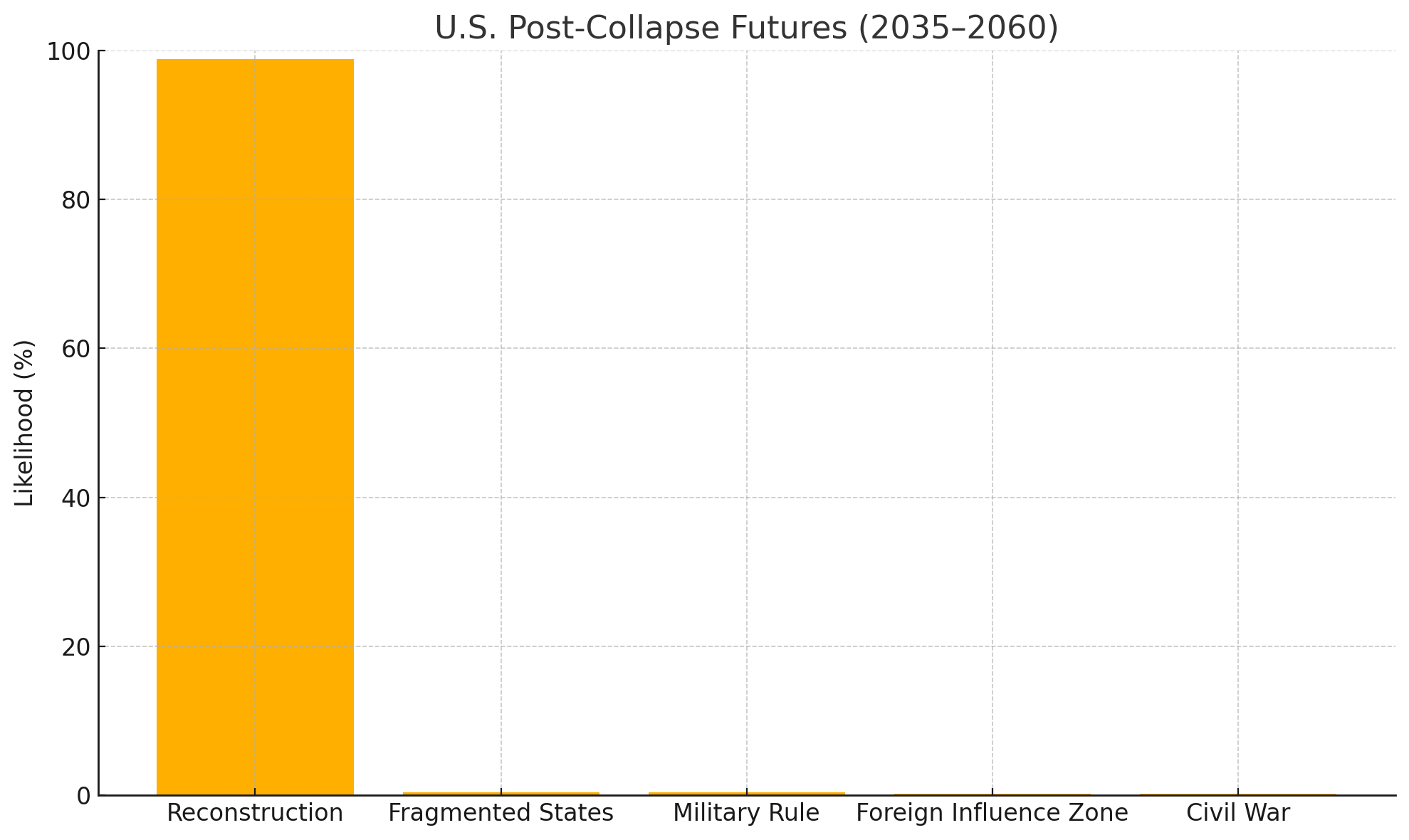After Collapse: Modeling U.S. Post-Collapse Futures (2035–2060)
Abstract
This follow-up report simulates what may happen after the collapse of the United States. Using a 25-year Markov model beginning in national fragmentation, the simulation explores five potential trajectories: prolonged division, authoritarian resurgence, foreign control, civil conflict, and national reconstruction. The results suggest that despite the destabilizing effects of collapse, reconstruction is by far the most likely long-term outcome.
Overview
The initial model projected a high likelihood of U.S. collapse by 2035. This report extends the simulation to ask: What comes next? Using a new transition matrix and post-collapse state space, the model simulates how a future United States—or what remains of it—might evolve from 2035 to 2060.
Post-Collapse States Modeled
- Fragmented States – Regional governments or successor nations take control
- Military Rule – A centralized regime emerges to enforce order
- Foreign Influence Zone – External powers assert control over parts of the former U.S.
- Civil War – Competing domestic factions engage in sustained conflict
- Reconstruction – A new national system or federated republic is established
Methodology
We modeled 10,000 simulations over a 25-year horizon (2035–2060). Each simulation began in Fragmented States, the assumed initial state after Total Collapse. Each year, the system transitioned to another state based on predefined probabilities reflecting global and historical post-collapse dynamics.
The model used a Markov process, where each year’s transition depended solely on the current state and transition matrix.
Results
| Final State | Likelihood (%) |
|------------------------|----------------|
| **Reconstruction** | 98.8% |
| Fragmented States | 0.4% |
| Military Rule | 0.4% |
| Foreign Influence Zone | 0.2% |
| Civil War | 0.2% |
Interpretation
The overwhelming dominance of Reconstruction suggests that even after national collapse, the U.S.—or its successor institutions—tends to rebuild. While regional fragmentation and foreign pressure may occur in the short term, they do not persist. Most paths converge toward some form of national reconstitution.
This could reflect inherent geographic, cultural, or institutional forces that favor reunification after disruption. It may also represent the relative fragility of prolonged foreign control or internal conflict in a large, resource-rich territory.
Conclusion
Collapse is not the end of the story. While the previous model showed collapse as the most probable near-future outcome, this simulation reveals a powerful long-term tendency toward reconstruction. The U.S. may fall—but if it does, it will likely rise again in a new form.
